Mental health
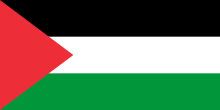
Health in the State of Palestine should be addressed by the healthcare system in the State of Palestine. There are problems arising from difficulty of access, water scarcity while burden of non-communicable diseases in Palestine is high; the problems are compounded in Gaza. [1]
According to the World Health Organization, obesity affects 26.8% of the Palestinian population (23.3% males, 30.8% females). This is mostly due to decreased physical activity and greater than necessary food consumption, particularly with an increase in energy coming from fat. Two other factors are smoking and urbanization. In addition, "leisure-time physical activity is not a common concept in the Palestinian context, especially for rural women, where lack of sex-segregated facilities and cultural norms are prohibitive factors." Women in urban areas face similar cultural restrictions.
However, a study of Gazan mothers between the ages of 18 and 50, published in 2014, concluded the obesity rates ranged between 57% and 67.5% depending on where they lived. This study reflected another study published in 2009 (referenced therein) that determined the obesity rate of Palestinian men at 58.7% and Palestinian women at 71.3%. [2]
Due to a lack of alternative sources of water, Palestinians in Gaza have resorted to overextraction from Gaza’s sole aquifer, resulting in the salinization of much of its water. [3] [4] A 2009 assessment of a sample of 180 Gazan wells demonstrated that over 90 percent of them possessed chloride concentrations that were four times greater than the maximum amount suggested by the WHO. [5] Gaza’s water supply has further been contaminated by waste water containing nitrate and pesticides, owing to a deficiency in Gazan waste water treatment capacity. A UN Environment Programme assessment of a sampling of Gazan wells demonstrated that nitrate levels in the drinking water exceeded the maximum amount suggested by the WHO by sixfold. Gaza’s waste systems are unable to effectively purify sewerage due to a scarcity of fuel and construction materials engendered by the ongoing embargo. Given their limited options, Gazans resort to drinking water deemed hazardous by the WHO for its high concentrations of salt, nitrate and other pesticides. The PNA’s Water Authority approximates that 25% of illnesses in Gaza are either directly or indirectly caused by unclean water. [6]
In the West Bank, only 69% of the towns are reached by a water network. Of these, less than half enjoy a constant supply of water without disruption. [7] As in Gaza, waste water is a key pollutant in the West Bank as roughly 90% of Palestinian waste water there goes unprocessed, leaving much of the water supply contaminated. Human rights groups point to an aging water infrastructure and the inequitable division of water resources between Israeli settlers and Palestinians as the principal causes of water problems. [8] On average, each person in Gaza consumes 91 liters of water per day, which is lower than the 100 liter minimum the WHO regards as necessary to meet baseline health needs. Water consumption in the West Bank averages to only about 73 liters per day per capita, lower than in Gaza because illegal drilling is not as prevalent.


The healthcare system of Gaza faced several humanitarian crises as a result of the conflict. Due to Israel's siege, hospitals faced a lack of fuel and relied on backup generators for the first two weeks of the war. [13] By 23 October, Gaza hospitals began shutting down as they ran out of fuel, starting with the Indonesia Hospital. [14] When hospitals lost power completely, multiple premature babies in NICUs died. [15] [16] Numerous medical staffers were killed by Israeli airstrikes, and ambulances, health institutions, medical headquarters, and multiple hospitals were destroyed. [17] The Medecins Sans Frontieres said scores of ambulances and medical facilities were damaged or destroyed. [18] [19] By late-October, the Gaza Health Ministry stated the healthcare system had "totally collapsed". [20]
By 5 January 2024, the World Health Organization reported there had been 304 attacks on healthcare facilities in Gaza since 7 October, with 606 deaths. [21] On 24 January, WHO stated seven out of 24 hospitals remained partially operational in Northern Gaza, and seven out of 12 in Southern Gaza. [22] On 26 January, a senior OHCHR official stated, "I fear that many more civilians will die. The continued attacks on specially protected facilities, such as hospitals, will kill civilians". [23] The same day, a Doctors Without Borders coordinator stated, "There is no longer a healthcare system in Gaza." [24] A senior technical adviser with the International Rescue Committee stated, "There’s nothing that could have prepared me for the horrors that I saw." [25] In May 2024, the UN Development Programme stated the conflict could reduce levels of health back to 1980 levels. [26]
The Gaza Strip, or simply Gaza, is a small, densely populated territory located on the eastern coast of the Mediterranean Sea. It is the smaller of the two Palestinian territories. Gaza is bordered by Egypt on the southwest and Israel on the east and north.

Palestine, officially the State of Palestine, is a country in the southern Levant region of West Asia, encompassing the Israeli-occupied West Bank and Gaza Strip, within the larger historic Palestine region. The country shares most of its borders with Israel, and borders Jordan to the east and Egypt to the southwest. It has a combined land area of 6,020 square kilometres (2,320 sq mi) while its population exceeds five million people. Its proclaimed capital is Jerusalem while Ramallah serves as its administrative center and Gaza City was its largest city until 2023. Arabic is the official language.

A blockade has been imposed on the movement of goods and people in and out of the Gaza Strip since Hamas's takeover in 2007, led by Israel and supported by Egypt. The blockade's current stated aim is to prevent the smuggling of weapons into Gaza; previously stated motivations have included exerting economic pressure on Hamas. Human rights groups have called the blockade illegal and a form of collective punishment, as it restricts the flow of essential goods, contributes to economic hardship, and limits Gazans' freedom of movement. The blockade and its effects have led to the territory being called an "open-air prison".
There are multiple humanitarian, medical, economic, and industrial effects of the 2008–2009 Gaza War which started with the Israeli air strikes on 27 December 2008 and ended on 18 January with a cease-fire implemented unilaterally by Israel, and later the same day by Hamas and other Palestinian factions. The cease-fire followed twenty-two days of bombardment by land, sea and air which left over 1,300 Palestinians dead and over 5,000 injured, and the death of 13 Israelis. The United Nations Development Programme warned that there will be long-term consequences of the attacks on Gaza because the livelihoods and assets of tens of thousands of Gaza civilians have been affected.

The economy of the Gaza Strip was dependent on small industries and agriculture. After years of decline, the Gaza economy experienced some growth in the late 2000s, boosted by foreign aid. According to the International Monetary Fund, the economy grew 20 percent in 2011, and the per capita gross domestic product increased by 19 percent.
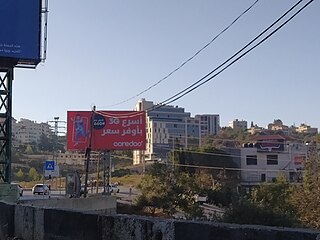
Communications in the State of Palestine occur across many media, including telephone, radio, television, and internet. The telecom infrastructure is growing at a very rapid pace and continually being updated and expanded.
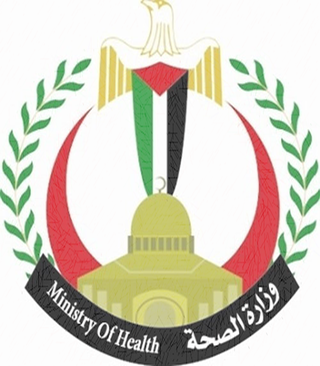
Healthcare in the State of Palestine refers to the governmental and private healthcare providers to which residents in the claimed territory have access. Since 1967, there have been improvements in the access to healthcare and the overall general health conditions for residents. Advances in training, increased access to state-of-the-art medical technology, and various governmental provisions have allowed per-capita funding to increase, and therefore the overall health of residents in the region to increase. Additionally, the enhanced access to and funding from international organizations like the World Health Organization, the United Nations, the Palestinian Ministry of Health, and the World Bank Education and Health Rehabilitation Project have contributed to the current state of affairs within the healthcare segment of the Palestinian territories.

The 2014 Gaza War, also known as Operation Protective Edge, and Battle of the Withered Grain, was a military operation launched by Israel on 8 July 2014 in the Gaza Strip, a Palestinian territory that has been governed by Hamas since 2007. Following the kidnapping and murder of three Israeli teenagers in the West Bank by Hamas-affiliated Palestinian militants, the Israel Defense Forces (IDF) initiated Operation Brother's Keeper, in which it killed 10 Palestinians, injured 130 and imprisoned more than 600. Hamas subsequently fired a greater number of rockets into Israel from the Gaza Strip, triggering a seven-week-long conflict between the two sides. It was one of the deadliest outbreaks of open conflict between Israel and the Palestinians in decades. The combination of Palestinian rocket attacks and Israeli airstrikes resulted in over two thousand deaths, the vast majority of which were Gazan Palestinians. This includes a total of six Israeli civilians who were killed as a result of the conflict.
The following is a list of events during the Israeli–Palestinian conflict in 2023, including the 2023 events of the Israel–Hamas war.
Events in 2023 in the Palestinian territories.
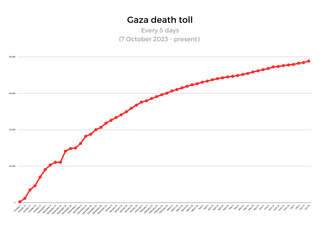
On 9 October 2023, Israel intensified the blockade of the Gaza Strip after the 2023 Hamas-led attack on Israel and the ensuing Israel–Hamas war. Israel's Defense Minister Yoav Gallant announced a "total blockade", blocking the entry of food, water, medicine, fuel and electricity. Egypt who controls Rafah Border Crossing has supported the blockade by not allowing Palestinians to enter Egypt.

Since the start of the Israel–Hamas war on 7 October 2023, the UN Human Rights Council has identified "clear evidence" of war crimes by both Hamas and the Israel Defense Forces. A UN Commission to the Israel–Palestine conflict stated that there is "clear evidence that war crimes may have been committed in the latest explosion of violence in Israel and Gaza, and all those who have violated international law and targeted civilians must be held accountable." On 27 October, a spokesperson for the OHCHR called for an independent court to review potential war crimes committed by both sides.
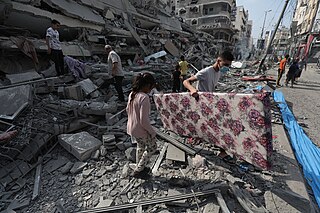
The Gaza Strip is experiencing a humanitarian crisis as a result of the Israel–Hamas war. The crisis includes both an impending famine and a healthcare collapse. At the start of the war, Israel tightened its blockade on the Gaza Strip, which has resulted in significant shortages of fuel, food, medication, water, and essential medical supplies. This siege resulted in a 90% drop in electricity availability, impacting hospital power supplies, sewage plants, and shutting down the desalination plants that provide drinking water. Widespread disease outbreaks have spread across Gaza.

A significant number of attacks on healthcare facilities occurred during the Israel-Hamas war. During the first week of the war, there were 94 attacks on health care facilities in Israel and Gaza, killing 29 healthcare workers and injuring 24. The attacks on healthcare facilities contributed to a severe humanitarian crisis in Gaza. By 30 November, the World Health Organization documented 427 attacks on healthcare in the West Bank and Gaza Strip, resulting in 566 fatalities and 758 injuries. By February 2024, it was reported that "every hospital in Gaza is either damaged, destroyed, or out of service due to lack of fuel." By April, WHO had verified 906 attacks on healthcare in Gaza, the West Bank, Israel, and Lebanon.As of June 2024, according to WHO, Israel has attacked 464 health care facilities, killed 727 health care workers, injured 933 health care workers, and damaged or destroyed 113 ambulances

During the Israel–Hamas war, the healthcare system of Gaza was destroyed by Israeli attacks on hospitals and health facilities, killing of healthcare workers, and blockade of medical supplies from entering Gaza. The resulting collapse of the healthcare system was part of a broader humanitarian crisis in the Gaza Strip caused by the war.
Many health workers have been killed during attacks on medical facilities and medical transport in the Israel-Hamas War. Although the injuries happened both on the Israeli side and on the Palestinian side, most of these attacks were carried out by Israeli forces against Palestinians.
This timeline of the Israel–Hamas war covers events from 7 October until 27 October 2023.

Since the beginning of the Israel–Hamas war in 2023, the Israeli military and authorities have been charged with committing war crimes, such as indiscriminate attacks on civilians in densely-populated areas ; genocide; forced evacuations; the torture and executions of civilians; sexual violence; destruction of cultural heritage; collective punishment; and the mistreatment and torture of Palestinian prisoners. Humanitarian organizations such as Human Rights Watch, Amnesty International, B'tselem, the UN Independent International Commission of Inquiry, the UN Human Rights Council, and human rights groups and experts, including United Nations special rapporteurs, have documented these actions.
{{cite web}}: CS1 maint: archived copy as title (link){{cite news}}: CS1 maint: bot: original URL status unknown (link)